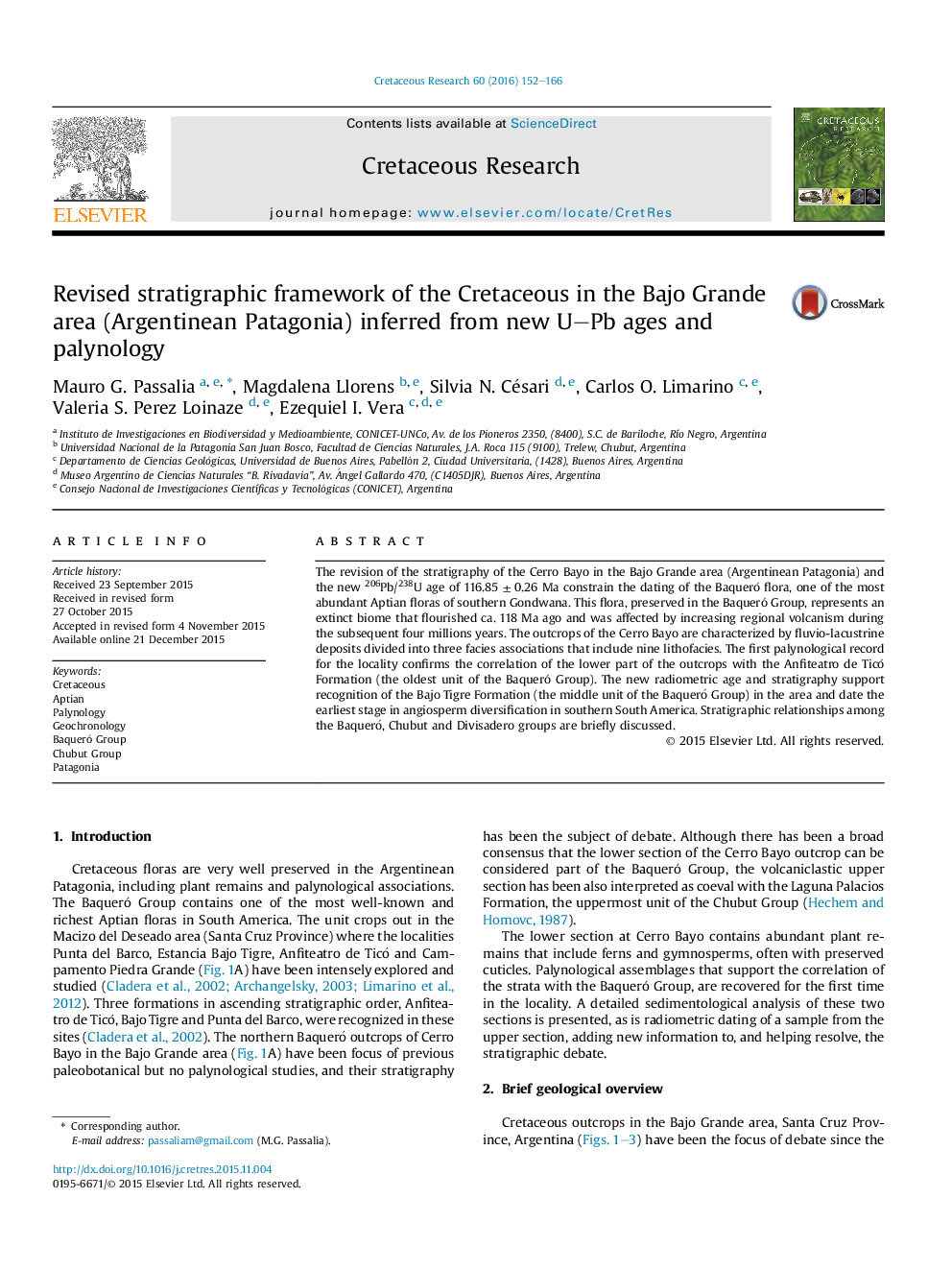| کد مقاله | کد نشریه | سال انتشار | مقاله انگلیسی | نسخه تمام متن |
|---|---|---|---|---|
| 4746770 | 1642063 | 2016 | 15 صفحه PDF | دانلود رایگان |

• Stratigraphy of Cretaceous deposits of Cerro Bayo (Patagonia, Argentina) was revised.
• Three major facies association were recognized and the paleoenvironmental evolution interpreted.
• Palynological record support correlation of lower deposits with Anfiteatro de Ticó Fm.
• A new U–Pb age of 116.85 Ma support correlation of upper deposits with Bajo Tigre Fm.
• Stratigraphic relationships among Baqueró, Chubut and Divisadero Group are discussed.
The revision of the stratigraphy of the Cerro Bayo in the Bajo Grande area (Argentinean Patagonia) and the new 206Pb/238U age of 116.85 ± 0.26 Ma constrain the dating of the Baqueró flora, one of the most abundant Aptian floras of southern Gondwana. This flora, preserved in the Baqueró Group, represents an extinct biome that flourished ca. 118 Ma ago and was affected by increasing regional volcanism during the subsequent four millions years. The outcrops of the Cerro Bayo are characterized by fluvio-lacustrine deposits divided into three facies associations that include nine lithofacies. The first palynological record for the locality confirms the correlation of the lower part of the outcrops with the Anfiteatro de Ticó Formation (the oldest unit of the Baqueró Group). The new radiometric age and stratigraphy support recognition of the Bajo Tigre Formation (the middle unit of the Baqueró Group) in the area and date the earliest stage in angiosperm diversification in southern South America. Stratigraphic relationships among the Baqueró, Chubut and Divisadero groups are briefly discussed.
Figure optionsDownload as PowerPoint slide
Journal: Cretaceous Research - Volume 60, May 2016, Pages 152–166